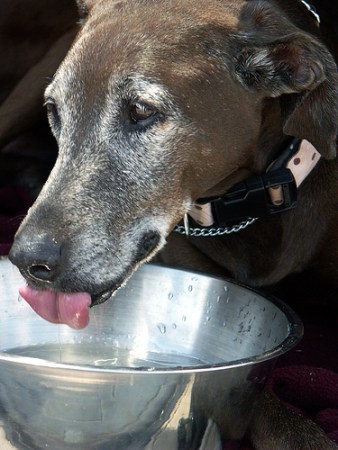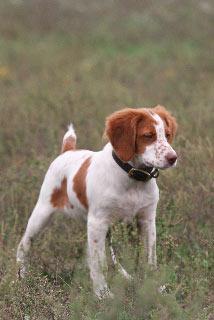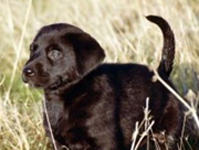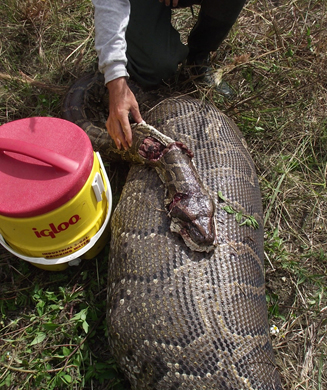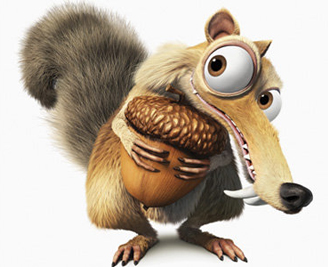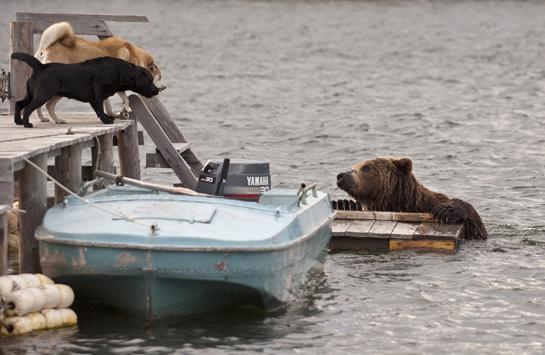The simplest yetmost unusual training aid ever to arrive on my doorstep was a plastic pillbottle filled with small rocks. Not surprisingly, it came from amateur trainerDon Goodwin Jr., who teaches dogs with fun and games. The bottle is theessential ingredient in a two-step method for getting a soft-mouthed retrieverwithout force training. Step one starts on the pup’s first day in its new home. Goodwin beginspreconditioning with variations of the food-bowl techniques outlined in my bookSpeed Train Your Own Retriever. His sequence is sit, heel, sit-stay, come.
During heel, heshakes the food bowl, which rattles the kibbles and captivates the pup. After ashort heel, he slips the leash around a table leg and does a sit-stay, holdinglittle Duke in place as he seats himself on the floor with the bowl in his lap.Being on the dog’s level makes the pup want to come to him, so when Dukesettles into a short held-in-place sit-stay, he releases the leash with a comecommand and shakes the bowl again. Duke eats his meal as Goodwin runs hisfingers in and out of the bowl, teaching that a hand around the mouth is anormal thing when something im portant is going on.
As the pup eats,Goodwin takes advantage of the time to establish pack dominance. He simplyleans forward over Duke and strokes him, saying, “Good boy.”
Step two startsafter Duke has learned sit-stay without restraint and as he tries his firstclumsy retrieves. Goodwin introduces the bottle of rocks. Shaking it soundslike kibbles rattling in the bowl. Duke comes running, all pumped up byGoodwin’s excitement and the rattling bottle. When the dog is totally focusedon the bottle, Goodwin says “fetch” and opens his hand flat to allowDuke to grab it. Duke runs around a bit, rolling the bottle in his mouth, but aleash assures that Goodwin can quickly take it again as he says, “Leaveit.” Lavish praise follows.
There will be fewrepetitions of this shake, rattle and roll before Duke bites down and Goodwinhears plastic crack. He instantly scolds his pup but quickly makes up and goeson with the game. Duke soon realizes that chewing on the bottle displeases hispack leader and is on his way to becoming a soft-mouthed retriever.
By the time Dukeis ready for formal fetch training, Goodwin already has a buddy that wants toplease, won’t go through the “I got the dummy/bird; try to catch me”phase, accepts hands around the mouth and finds delivery to be a naturalextension of the ongoing game. Finally, that game will include retrieving ducksreliably and without teeth marks. Rarely if ever will this fun-trained pup andhis owner need to face confrontational force training.
RATTLE TRAINING IN 2 EASY STEPS
1 – Use feeding time to train for sit, heel, sit-stayand come. During heel, shake the food bowl so that the kibbles rattle, becominga sound that excites the pup.
2 – When the pup attempts to fetch, switch to arock-filled pill bottle for the rattling sound. When the pup is overcome withexcitement, let him grab the bottle and mouth it. Eventually, the plasticcracks and the pup is mildly scolded. The game teaches that hardmouth isunacceptable.
POPSICLE CURE
Dummies are firm enough to discourage hardmouth habitsfrom developing in most dogs. But a soft, fresh-killed duck is a whole newlevel of temptation. It’s wiser to introduce duck scent through fetch practicewith a hard frozen bird. But avid duck hunter Don Goodwin’s latest dog, Pete, aChessie, adamantly refused to take cold objects in his mouth. So Goodwin got apopsicle, seated Pete, and teased him mercilessly, bringing it near but thenjerking it out of his reach. When Pete wanted it so badly he was drooling,Goodwin brought it close. Pete knocked it off the stick and devoured it. At therate of just one a day of his favorite flavor, banana, Pete was soon ready tofetch frozen ducks.

